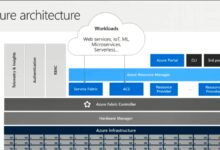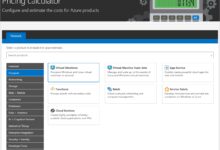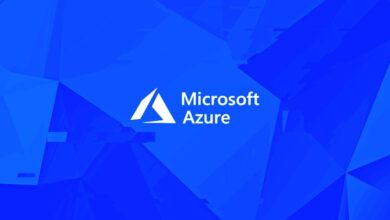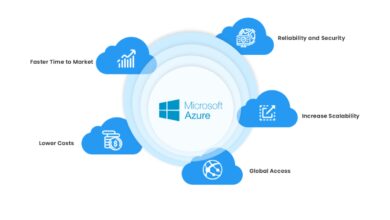Calculate Azure Costs: 7 Powerful Strategies to Master Your Cloud Spending
Want to calculate Azure costs accurately and avoid bill shock? You’re not alone. With Microsoft Azure’s vast array of services, understanding your spending can feel overwhelming—until now.
Why You Need to Calculate Azure Costs Accurately

Understanding how to calculate Azure costs isn’t just about budgeting—it’s about control, optimization, and long-term cloud efficiency. Many organizations migrate to the cloud expecting cost savings, only to be surprised by unexpectedly high bills. This often stems from a lack of visibility into resource usage, idle instances, or over-provisioned services.
The Hidden Dangers of Unmonitored Cloud Spending
When you don’t actively calculate Azure costs, you risk falling into what’s known as “cloud sprawl.” This occurs when teams spin up virtual machines, storage accounts, or databases without proper oversight. Over time, these unused or underutilized resources accumulate, silently draining your budget.
- Orphaned disks and unattached storage accounts continue to incur charges.
- Development environments left running 24/7 can cost thousands annually.
- Auto-scaling without limits can lead to runaway expenses during traffic spikes.
According to a 2023 Flexera State of the Cloud Report, 32% of cloud spend is wasted due to poor management and lack of cost visibility. That’s over $1 out of every $3 spent on cloud resources going to waste.
“If you can’t measure it, you can’t manage it.” – Peter Drucker
Business Impact of Poor Cost Management
When teams fail to calculate Azure costs effectively, the ripple effects extend beyond finance. Engineering leads may face pressure to justify cloud budgets, while CFOs question ROI on digital transformation initiatives. This lack of transparency can stall innovation and lead to restrictive cloud policies that hinder agility.
On the flip side, organizations that proactively monitor and optimize their Azure spending report up to 40% lower cloud bills within the first year of implementing cost governance strategies.
How to Calculate Azure Costs: Core Components and Pricing Models
To truly calculate Azure costs, you must first understand the building blocks of Azure’s pricing structure. Unlike traditional on-premises infrastructure, Azure operates on a pay-as-you-go model, where you’re billed based on consumption, duration, and service tier.
Compute: The Heart of Your Azure Bill
Compute resources—such as Virtual Machines (VMs), Azure Kubernetes Service (AKS), and Azure Functions—are often the largest contributors to your monthly bill. Each VM size (e.g., B2s, D4s_v3, E8as_v4) has a different hourly rate based on CPU, memory, and temporary storage.
For example, a D4s_v3 VM in the East US region costs approximately $0.192/hour on pay-as-you-go. If it runs 24/7 for a month (730 hours), that’s about $140.16. Multiply that by 10 VMs, and you’re looking at over $1,400 monthly—just for compute.
- Spot VMs can reduce costs by up to 90% but are best for fault-tolerant workloads.
- Reserved Instances offer up to 72% savings for predictable workloads with 1- or 3-year commitments.
- Serverless options like Azure Functions charge per execution and memory used, making them ideal for event-driven tasks.
Microsoft provides a detailed pricing calculator to help you estimate these costs: Azure Pricing Calculator.
Storage and Data Transfer: The Silent Cost Drivers
Storage is often underestimated when you calculate Azure costs. Azure Blob Storage, Disk Storage, and File Storage each have different pricing tiers (Hot, Cool, Archive) based on access frequency and redundancy.
For instance, storing 1 TB of data in Hot tier costs ~$20/month, while moving it to Archive tier drops to ~$1.50/month. However, retrieval fees and access latency increase significantly in lower tiers.
Data transfer—especially outbound data—can also add up. The first 5 GB/month is free, but beyond that, rates range from $0.08/GB (first 10 TB) to $0.05/GB (next 40 TB). If your app serves large media files globally, these costs can escalate quickly.
“Storage is cheap until you need a lot of it.” – Cloud Architect Adage
Tools to Calculate Azure Costs Effectively
Microsoft offers several native tools to help you calculate Azure costs with precision. Leveraging these tools is essential for gaining visibility and control over your cloud spending.
Azure Cost Management + Billing
This is the go-to platform for anyone looking to calculate Azure costs in real time. Integrated directly into the Azure portal, Cost Management provides dashboards, cost analysis reports, budgets, and forecasting tools.
You can filter costs by:
- Resource Group
- Service Type (e.g., Virtual Machines, Storage)
- Location (Region)
- Tags (e.g., Environment=Production, Department=Marketing)
One of its most powerful features is the ability to set custom budgets with email or webhook alerts when thresholds are exceeded. For example, you can set a $500 monthly budget for your dev team and get notified at 80% and 100% usage.
Learn more: Azure Cost Management Documentation.
Azure Pricing Calculator
Before deploying any resource, use the Azure Pricing Calculator to estimate your monthly costs. It allows you to build a custom solution by adding VMs, databases, bandwidth, and more.
The calculator provides:
- Monthly and hourly cost estimates
- Comparison between pay-as-you-go and reserved instances
- Exportable summaries for stakeholder reviews
It’s an essential tool for architects and finance teams to align on expected spend before any deployment.
Azure Advisor and Total Cost of Ownership (TCO) Calculator
Azure Advisor is a personalized cloud consultant that analyzes your usage patterns and recommends cost-saving opportunities. It might suggest:
- Downsizing underutilized VMs
- Purchasing Reserved Instances
- Deleting idle load balancers or public IPs
The TCO Calculator helps you compare the cost of running workloads on-premises versus in Azure. It factors in hardware, power, cooling, IT labor, and downtime to give a holistic view of potential savings.
“Azure Advisor identified $18,000 in annual savings for our team by recommending VM resizing and reservations.” – IT Director, Mid-Sized Enterprise
Best Practices to Calculate Azure Costs and Optimize Spending
Knowing how to calculate Azure costs is only half the battle. The real value comes from using that data to drive optimization and governance.
Implement Resource Tagging Strategy
Tags are key-value pairs (e.g., Project=CRM, Owner=john@company.com) that allow you to categorize and track resources. Without tags, it’s nearly impossible to allocate costs accurately across departments, teams, or projects.
Best practices for tagging:
- Define a tagging policy early in your cloud adoption journey.
- Enforce tagging via Azure Policy to prevent untagged resources from being created.
- Use tags like Environment (Dev/Test/Prod), Department, Application, and Cost Center.
Once tagged, you can generate cost reports filtered by any of these dimensions, enabling chargeback or showback models.
Leverage Reservations and Savings Plans
If you have predictable workloads, Reserved VM Instances (RIs) can save you up to 72% compared to pay-as-you-go pricing. You commit to 1 or 3 years of usage, and in return, get a significantly reduced hourly rate.
For example, a 3-year reservation for a D4s_v3 VM can reduce the hourly cost from $0.192 to $0.053—a 72% discount.
Azure also offers:
- SQL Database Reserved Capacity
- Azure Cosmos DB Reserved Capacity
- Compute Savings Plans (flexible across VM families and regions)
Use the Cost Analysis tool in Azure to identify eligible resources for reservations and simulate savings.
Monitor and Alert on Cost Anomalies
Set up automated alerts to detect unexpected cost spikes. Azure Cost Management supports anomaly detection that uses machine learning to identify unusual spending patterns.
For example, if your monthly bill typically hovers around $5,000, and suddenly jumps to $8,000 in a week, an alert can trigger an investigation before costs spiral.
You can integrate these alerts with:
- Email notifications
- Microsoft Teams or Slack via webhooks
- Azure Logic Apps for automated remediation (e.g., shutting down non-critical resources)
Advanced Techniques to Calculate Azure Costs Across Multi-Team Environments
In large organizations, calculating Azure costs becomes more complex due to multiple teams, departments, and subscriptions. A centralized cost management strategy is essential.
calculate azure costs – Calculate azure costs menjadi aspek penting yang dibahas di sini.
Use Management Groups for Hierarchical Cost Tracking
Azure Management Groups allow you to organize subscriptions into a hierarchy, making it easier to apply policies, governance, and cost reporting at scale.
For example:
- Root Management Group → Finance Department → Subscription A
- Root Management Group → Engineering → Dev Subscription, Prod Subscription
This structure enables consolidated billing and cost roll-ups across departments.
Implement Chargeback and Showback Models
Once you can accurately calculate Azure costs per team or project, you can implement financial accountability models:
- Showback: Reports show each team their usage and costs, but billing remains centralized.
- Chargeback: Teams are billed internally based on their actual cloud consumption.
These models encourage cost-conscious behavior and help justify cloud investments to leadership.
Integrate with Third-Party Tools
While Azure’s native tools are robust, third-party platforms like CloudHealth by VMware, Azurelytics, and Apptio offer advanced analytics, AI-driven recommendations, and multi-cloud cost management.
These tools can:
- Normalize costs across AWS, Azure, and GCP
- Provide predictive analytics for future spend
- Automate cost optimization actions
They’re especially valuable for enterprises with hybrid or multi-cloud environments.
Common Mistakes When Trying to Calculate Azure Costs
Even experienced cloud teams make errors when trying to calculate Azure costs. Avoiding these pitfalls can save you time, money, and frustration.
Ignoring Egress (Outbound) Data Charges
Many teams focus on compute and storage but forget about data transfer costs. If your application serves large files or streams data to users globally, egress fees can become a major expense.
For example, transferring 10 TB of data out of Azure to the internet in North America costs approximately $800/month. Using Azure CDN can reduce this by up to 50%.
“We didn’t realize our video platform was spending $3K/month on egress until we dug into the cost breakdown.” – CTO, SaaS Startup
Over-Provisioning Without Monitoring
It’s common to start with larger VM sizes “to be safe,” but without performance monitoring, you may be paying for unused capacity. Use Azure Monitor and Metrics Advisor to track CPU, memory, and disk usage over time.
If a VM consistently uses less than 20% CPU, it’s a prime candidate for downsizing.
Failing to Clean Up Test and Dev Environments
Development environments often run 24/7, even when idle. Implement auto-shutdown policies using Azure Automation or DevTest Labs to turn off non-production resources during nights and weekends.
One company saved $45,000 annually by scheduling VM shutdowns outside business hours.
Future-Proofing Your Azure Cost Strategy
The cloud is constantly evolving, and so should your approach to calculate Azure costs. Staying ahead requires proactive planning and continuous optimization.
Adopt FinOps Principles
FinOps (Financial Operations) is a cultural and operational framework that brings financial accountability to cloud spending. It combines people, processes, and tools to help organizations get maximum value from their cloud investments.
The FinOps Foundation outlines three phases:
- Inform: Gain visibility into costs.
- Optimize: Identify and implement savings.
- Operationalize: Embed cost awareness into daily operations.
By adopting FinOps, teams can move from reactive cost management to proactive financial engineering.
Use AI and Machine Learning for Predictive Cost Analysis
Azure is integrating AI into its cost tools. For example, Azure Cost Management’s forecasting feature uses historical data to predict future spend with 90%+ accuracy.
You can also build custom models using Azure Machine Learning to:
- Predict cost spikes based on usage patterns
- Recommend optimal reservation purchases
- Automate budget adjustments
Stay Updated on Azure Pricing Changes
Microsoft regularly updates Azure pricing—sometimes reducing costs, other times introducing new charges. Subscribe to the Azure Updates blog and set up alerts for pricing changes in services you use heavily.
For example, in 2023, Azure reduced prices for several VM families by up to 15%, directly impacting cost calculations for existing workloads.
How do I start calculating my current Azure costs?
Navigate to the Azure portal, go to Cost Management + Billing, and use the Cost Analysis tool to view your spending by service, resource group, or tag. Start with a 30-day report to get a clear picture of your baseline usage.
What’s the easiest way to reduce my Azure bill?
Begin by identifying and deleting unused resources—such as unattached disks, idle VMs, and orphaned public IPs. Then, purchase Reserved Instances for stable workloads and set up auto-shutdown for dev/test environments.
Can I calculate Azure costs before deploying resources?
Yes! Use the Azure Pricing Calculator to estimate costs for any combination of services. It’s the best way to forecast spend and get stakeholder approval before deployment.
Are there free tools to help calculate Azure costs?
Azure provides several free tools, including Azure Cost Management, Azure Pricing Calculator, and Azure Advisor. These are included with your Azure subscription and offer robust cost analysis and optimization recommendations.
How accurate is the Azure Pricing Calculator?
The Azure Pricing Calculator is highly accurate for standard configurations. However, it doesn’t account for all variables like premium support plans, data transfer between regions, or third-party marketplace charges. Always treat it as an estimate and validate with actual usage data.
Calculating Azure costs is not a one-time task—it’s an ongoing discipline that requires the right tools, processes, and mindset. By leveraging Azure’s native cost management features, implementing tagging and reservations, and adopting FinOps practices, you can gain full control over your cloud spending. The goal isn’t just to reduce costs, but to maximize the value you get from every dollar spent on Azure. Start today by reviewing your current bill, identifying quick wins, and building a sustainable cost optimization strategy.
calculate azure costs – Calculate azure costs menjadi aspek penting yang dibahas di sini.
Recommended for you 👇
Further Reading:









